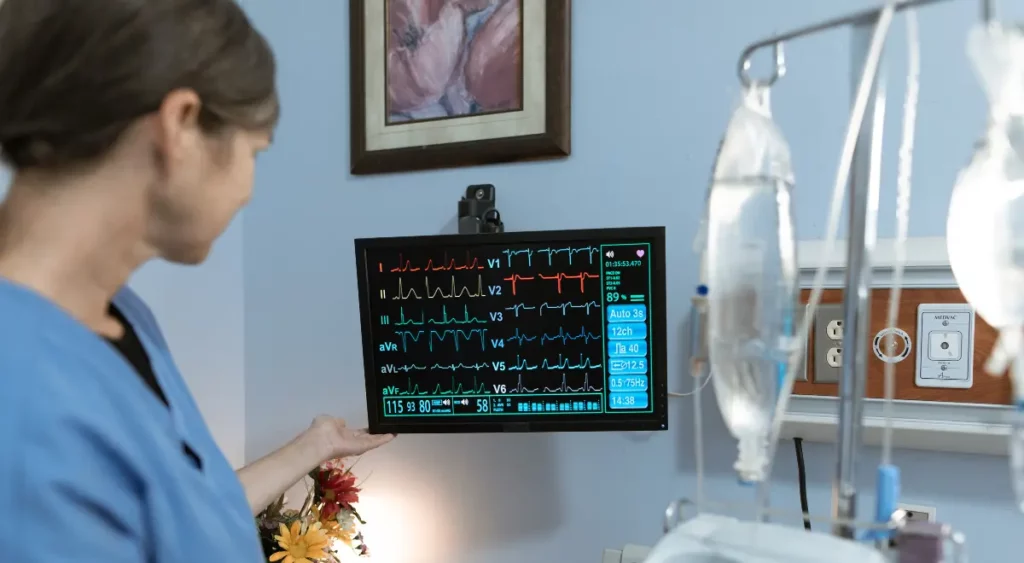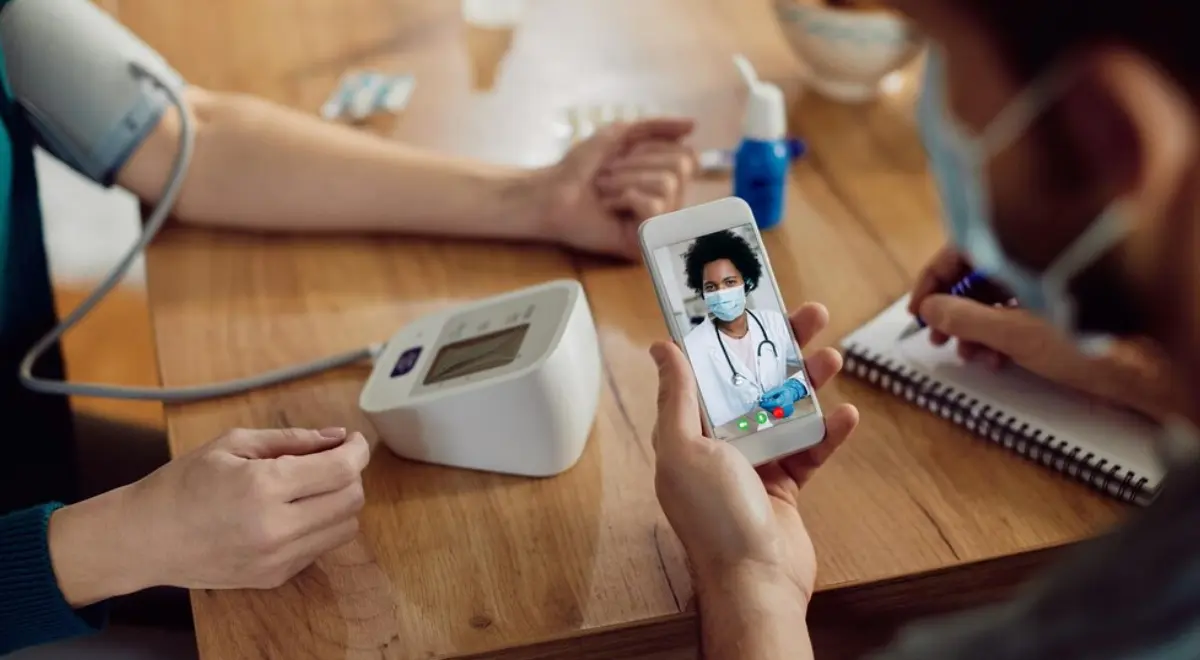Scope of Remote Patient Monitoring (RPM) in Technology-driven Healthcare Industry

During the Covid-19 pandemic, Remote Patient Monitoring (RPM) became popular for helping physicians in tracking patients’ vitals remotely when they were unable to make clinical visits.
RPM allows remote monitoring of patients from the comfort of their home and have made significant advancements in the care delivery model by improving the provider-patient communication, enhancing virtual care outcomes and boosting healthcare reimbursements.
By implementing remote monitoring programs, healthcare practices are becoming more informed in terms of giving the right care and prescribing treatment plans needed for the overall well-being of patients. In this blog, we’ll discuss the how remote patient monitoring is helping chronically ill patients; and providers in ensuring better health outcomes.
Table of Contents
ToggleRPM for Managing Sleep Disorders
Sleep disorders, such as sleep apnea and insomnia can have a significant impact on a person’s overall health and well-being. RPM has is an innovative technology that plays a critical role in diagnosis and treatment of sleep problems. It enables healthcare providers to monitor sleep patterns and insomnia symptoms outside of the usual clinical setting using remote monitoring devices, such as wearable sensors and cellular devices.
These devices measure patients’ blood oxygen levels, heart rate, and heart rate variations to track their sleep habits in near real time, including how many hours they slept, how deep they slept, and more. Healthcare providers can spot abnormalities in a patient’s normal sleep patterns and make the necessary interventions by evaluating sleep data collected by connected remote monitoring devices. RPM for sleep disorders helps with:
- Managing Sleep Disorders
- Early Detection of Sleeping Problems
- Making Interventions in Treatment Plans
- Improved Patient Engagement
- Remote Sleep Quality Monitoring
RPM for Managing Geriatric Care
With aging, seniors often face a myriad of health issues, including occurrence of chronic conditions, mobility restrictions, and functional decline. Traditional healthcare approaches may not provide the degree of care and continuous monitoring required in addressing the complicated healthcare concerns that comes along with aging.
Comprehensive 24/7 health monitoring for the elderly using an RPM platform is critical to ensuring their overall well-being and quality of life. It enables continuous monitoring and management of ill health conditions, thereby allowing timely interventions and care coordination.
RPM in geriatric care can slow down the progression of chronic diseases and ensure continued wellbeing following discharge from an acute care facility. RPM can assist elders improve their quality of life by:
- Reducing the need for emergency hospital visits
- Enabling seniors to live in their chosen location
- Reducing the need to migrate into expensive care facilities
- Fulfilling the role of care providers in assisted living facilities
- Enhancing the quality of care and lifestyle for seniors
RPM for Oncology Care
With the introduction of RPM technology, real-time monitoring of cancer patients has become simple and convenient, allowing for the management of symptoms and other health complications that may arise with cancer treatment. It also plays a significant role in diagnosing underlying symptoms before they worsen, thereby preventing significant health consequences in those with a weaker immune system.
There are various advantages to using RPM in oncology, including:
- Improved patient outcomes
- Regular monitoring of patients’ health data
- Aids timely intervention and tailored treatment plans
- Easy tracking of health vitals
- Better care coordination and patient satisfaction
- Minimizes healthcare costs
- 24/7 real-time monitoring of patients
- Reducing hospitalizations and emergency room visits
- Improves overall efficiency of cancer care delivery model
Though cancer is one of the most dangerous illnesses with low patient success rates, adopting RPM for oncology patients have shown a notable improvement in health outcomes. RPM is invaluable across various cancer treatments, including chemotherapy, surgeries, and other procedures requiring 24/7 monitoring to track patient outcomes.
RPM for Neurological Conditions
When it comes to neurological conditions, both the peripheral and central nervous system may reduce a patients’ ability to walk and impact cognitive functionality in patients, especially those with epilepsy and Parkinson’s disease. Remote patient monitoring can assist healthcare professionals in managing these chronic neurological conditions with continuous follow-ups, enhanced care coordination, improved clinical results and higher patient satisfaction. Some benefits of RPM in neurology include:
- Tracks changes in symptoms
- Monitoring medication adherence
- Make adjustments to treatment plans as needed
- Identifies health complications at an early stage
- Identifies changes in motor symptoms or medication side effects
- Monitors vital signs, activity levels, and other neurological parameters
- Prevent emergencies and improve patient safety
Modern day RPM technology offers a more convenient and cost-effective alternative to traditional or in-office visit, allowing patients to be monitored remotely and ensuring a reduced load on healthcare providers as well.
RPM for Respiratory Conditions
RPM allows patients to monitor the functioning of their lungs, including how much air they can breathe in and the volume of oxygen in blood. This enables physicians and clinicians to keep track of their patients’ respiratory data and identify any underlying health conditions.
Providers witnessed improved health outcomes in patients who used RPM and it helps in avoiding sudden health complications, thereby ensuring fewer emergency hospital visits. By providing timely interventions and customized treatment plans, clinicians reported improvements in asthma and COPD therapy outcomes with an effective long-term control strategy. Some benefits of RPM for respiratory conditions include:
- Increased awareness of disease status
- Decreased recurring asthma episodes
- Decreased emergency care visits
- Makes patient care simpler and convenient
- Closer check on patients and better care coordination
- Helps make better clinical decisions
- Reduces total healthcare costs
Remote patient monitoring allows clinicians to keep a check on patients who may be at risk of a respiratory ailment or are already receiving treatment for one. Since respiratory symptoms are not always visible, monitoring lung function on a regular basis help in detecting health issues at an early stage.
RPM for Obesity & Weight Management
Remote care is an efficient way to combat obesity while also reducing healthcare costs. Implementing virtual care management models, such as remote patient monitoring for weight management can help healthcare practitioners achieve better outcomes for obese patients.
For managing obesity, Remote Patient Monitoring (RPM) enables transmission of readings from patients’ weight scale to the RPM platform in near real time. Similarly, other vitals can be tracked 24/7 with connected devices. RPM for obesity and weight management helps in:
- Continuous monitoring of critical health indicators
- Assess patient progress and customize treatment plans
- Create personalized nutrition and exercise regimens
- Promotes patient participation and empowerment
- Near real-time monitoring and feedback mechanisms
- Enhanced treatment adherence and health outcomes
Digital weight management apps and cellular-based weight scales and other health metrics are widely used to achieve weight loss goals.
RPM for Cardiology & Heart Diseases
When it comes to cardiology, RPM is used to monitor patients with hypertension, congestive heart failure (CHF), and arrhythmias, who require frequent prescription modifications and timely interventions. It can be used to increase patient adherence, pre/post-op monitoring, and the prediction/ prevention of cardiac events via predictive analysis. The significance of RPM for heart patients include:
- Ensures cost-effective real time monitoring
- Reduced readmissions in congestive heart failure patients
- Value-based care and improved health outcomes
- Fewer chances of cardiac hospitalization and ER visits
- Improved access to preventative care
RPM for Diabetes Management
Diabetes is a common chronic condition that can be tracked using RPM software, glucometers, and continuous glucose monitoring (CGM) devices. Continuous tracking and monitoring allows for timely treatments and reduces the likelihood of high-risk health problems such as hypoglycemia or hyperglycemia.
Using remote glucometers for diabetes, practitioners can gain insights into a patient’s daily glucose readings in near real time. RPM reduces costs in diabetes management and monitoring by ensuring:
- Fewer hospitalizations and emergency visits
- Identify and treat complications early
- Better care coordination and patient-provider communication
- Early interventions and more effective treatment
- Enhanced patient involvement
RPM for Blood Pressure Monitoring
Remote blood pressure monitoring refers to using a remote patient monitoring (RPM) platform and FDA-approved remote patient monitoring devices to monitor blood pressure vitals. Patients can take their BP readings at home daily or as suggested by the physician. The blood pressure monitor automatically sends readings to the digital health platform, where the clinician may view the data and intervene as needed via the dashboard.
Clinicians can make timely interventions after receiving a notification alert that’s generated when a patient’s blood pressure values exceed the specified limits. RPM For blood pressure management ensures:
- Regular blood pressure monitoring
- Medication reminders for adherence
- Real time symptoms assessment
- Reduce communication barriers
- Timely interventions whenever needed
Implementing RPM To Reducing Healthcare Expenditures
Remote patient monitoring (RPM) is crucial for improving patient outcomes, care coordination, better patient provider communication, and lowering healthcare costs. RPM has gained traction and confidence of healthcare providers who want to achieve their objectives of optimal health outcomes, improved patient self-management, and real-time health checks for chronically ill patients from a remote setting.
A research on RPM found that it improved patient outcomes while lowering healthcare expenditures and reducing hospital readmissions by 20% in adults with heart failure. Another study discovered that RPM improved medication and treatment adherence in respiratory patients by 20%, resulting in a better quality of life and lower healthcare expenses.
Make the Most of Remote Care with HealthArc’s Advanced Care Platform
HealthArc’s all-in-one remote patient monitoring and advanced care platform enable clinicians to monitor their patients, improve reimbursements, and facilitate documentation while improving clinical efficiency and patient outcomes. Our HIPAA-compliant software guarantees that your patient billing and reimbursement meets the healthcare policies and stay organized to streamline your expenditure.
Healthcare practices can boost staff productivity and access billing details that comply with CPT codes and ensure a seamless interaction with all major EHRs via HL7 and FHIR capabilities. Schedule a free demo today to see how our digital health platform works, or contact us at +201 885 5571 for more details.
Most recent blogs
Categories
- Advanced Primary Care Management
- Behavioral Health Integration
- Cellular Remote Patient Monitoring
- Chronic Care Management
- Chronic Care Management Billing
- Chronic Care Management CPT Codes
- Chronic Care Management Program
- Chronic Care Management Software
- Digital Health Platform
- Principal Care Management
- Principal Care Management CPT Codes
- Remote Care Programs
- Remote Monitoring Devices
- Remote Patient Care
- Remote Patient Monitoring
- Remote Patient Monitoring Billing
- Remote Patient Monitoring CPT Codes
- Remote Patient Monitoring Devices
- Remote Patient Software
- Remote Therapeutic Monitoring
- Remote Therapeutic Monitoring Billing
- Remote Therapeutic Monitoring CPT Codes
- Telemedicine & RPM
- Transitional Care Management
- Transitional Care Management Billing
- Transitional Care Management CPT Codes
Related Posts
- February 21, 2025 | Read Time: 5 mins
RPM’s Role in Identifying Early Symptoms of Chronic Conditions for Prevention
- February 14, 2025 | Read Time: 4 mins
Monitoring Post-Surgical Recovery With RPM Systems
- February 10, 2025 | Read Time: 5 mins






